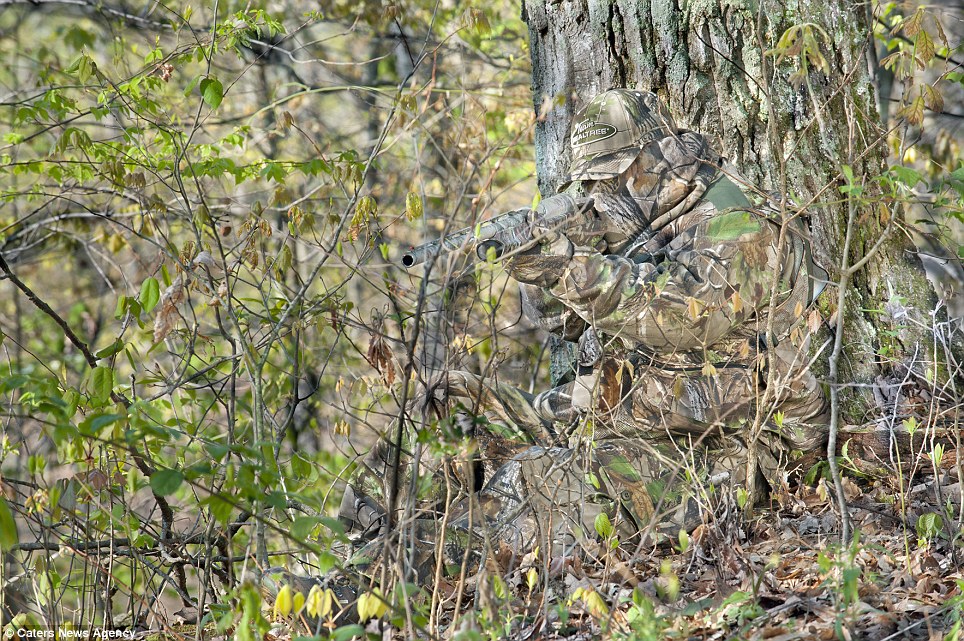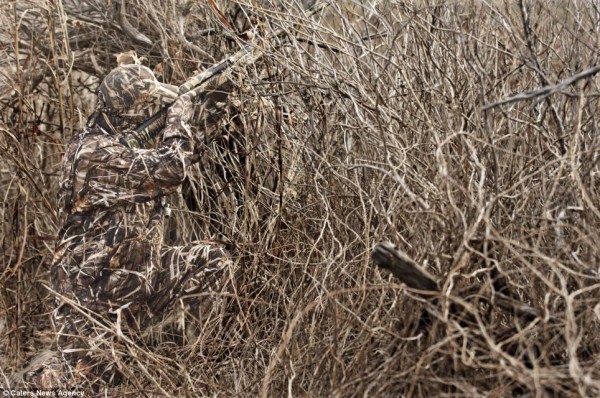The basic principle behind camouflage is to use the natural surroundings in the area to hide your presence. This will obviously vary from location to location, and it is important that you dress for success based on where you will be hunting. Using a little bit of common sense while making the most of what is available in the area will help you to blend in to the surroundings while minimizing chances of being detected.
Remember that animals have a better sense of the area than you, and they are wired to detect even the smallest of anomalies that may indicate the presence of a threat. Standing upwind, next to a tree in an area with sparse vegetation while wearing clothing that clashes with the surrounding terrain is a sure-fire way to get noticed. It is essential that you do whatever you can to become part of the scenery and make necessary adjustments.
Blending
You need to do whatever it takes to blend into the local landscape. This may involve finding a thicket of bushes to hide behind, creating a covering made from leaves and twigs that you can hide beneath on the ground or elevating yourself by climbing a tree. You may need to wear a camouflage jacket or paint your face and hands. There are no hard and fast rules that will ensure success in every situation, and it is important that you are willing to adapt and make modifications as you go.
Whenever possible, try and plan ahead. If you know that you will be in a particular forested area, then you can dress accordingly. If you plan on being in the desert or in open spaces, you can adapt to those surroundings as well. While this is not always possible, especially if you are in a situation that you didn’t have time to plan for, knowing where you will be hunting beforehand will help you to plan better.
Positioning
Making yourself invisible goes a long way when it comes to a successful hunt. However, where you situate yourself is just as important. The further away you are from the target and their line of sight will put you at an advantage that can reduce the need to camouflage in the first place.
Hiding behind rocks on a ridge or small hill can give you a good vantage point without alerting animals to your presence. Getting up into a tree is also an excellent way to avoid scaring away animals as they forage on the ground. Elevations give you better protection along with the ability to take in your surroundings. However, they will only work if you can take aim and strike at your intended target, so this scenario won’t apply to every situation, but it is an incredible opportunity when available.
Avoid being upwind of your intended prey as well. Animals have an acute sense of smell, and they can easily detect the presence of hunters simply by noticing their odor as it gets carried by the air. Standing downwind and facing the target upwind will eliminate the chances of failing the smell test and startling the target.
Most of the time that you spend hunting will be on choosing the right area, providing adequate camouflage and avoiding detection. Where you set up and how you conduct the hunt will depend on the weapon you are using, your skill and what animal you are hunting. Just remember that it is a skill that involves practice, patience and being acutely aware of your surroundings through the animal’s perspective. Be willing to adapt on the fly and remember that there is never a one-size-fits-all approach to stalking that works. The more you know about the terrain and how to mask your presence accordingly will translate into more successful and efficient hunts.



